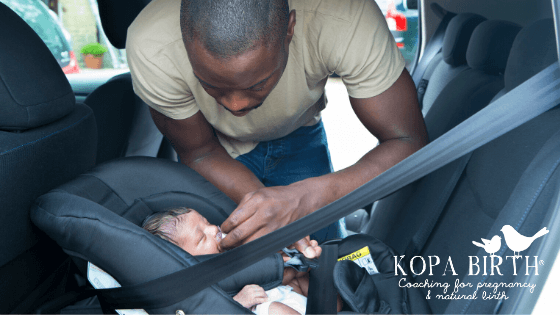
Estimated reading time: 4 minutes
For many parents, understanding the ins and outs of car seat safety can be worrying and stressful. But never fear — here’s a list of basic car seat safety tips that will help you keep baby safe and sound!
When it comes to car seat safety, rear-facing is by far the safest way to ride. In fact, pregnancy experts at the Mayo Clinic went so far as to say that rear-facing is the only safe position for infants in cars. When a baby is facing forward in a collision, they are at greater risk of head and neck injuries than if they were rear-facing because their head could be thrown forward. The American Academy of Pediatrics (AAP) recommends that babies ride in a rear-facing seat until they have reached the highest weight and height allowed by their car seat. This is a change from the traditional advice to switch to forward-facing once baby turns two. Don’t rush your child in their transition from rear-facing to front-facing. As long as they are within the height and weight limits for their car seat, rear-facing is the best option for car seat safety (2, 4).
While it might seem obvious, following your manufacturer’s recommendations is an important part of car seat safety. If your infant is too tiny for their car seat, it might be hard for them to breathe, and they may more easily be injured in an accident since their head and neck aren’t well-supported. Have a conversation with your hospital staff before taking baby home for the first time if baby is premature or weighs 5.5 pounds or less. It may be safer for you to bring your newborn home in a special car bed rather than a car seat. In addition, it’s a bad idea to add extra cushions or pads to help your child better fit their car seat, because added cushioning can compress in the impact of a crash and allow your child to slip under their harness (1, 3).
Because every car is different, it can be difficult to know where and how to safely install your child’s car seat. Ignore the temptation to throw away your user manual and just wing it–proper installation and placement are vital to car seat safety. If you are unsure how to follow the diagrams or information in your manual, contact your car manufacturer for guidance.
Coming home from the hospital for the first time can be a nerve-wracking experience. But with the right preparation, the drive home with baby can be an exciting transition! Do yourself a favor and eliminate the angst of trying to figure out your child’s car seat for the very first time in the hospital parking lot. Ease your worry about car seat safety and practice installing, uninstalling, and reinstalling baby’s car seat beforehand until you can do so easily. Doing this during pregnancy will allow you to feel secure and relaxed as you bring baby home for the first time.
When babies ride in the front seat, they are at high risk of being seriously injured or killed by air bags in the event of a collision. Air bags inflate at very high speeds, and this contributes to their ability to cause serious injury to baby’s head and spine. While air bags can protect older children, they can prove deadly for infants. The backseat is the safest place for children to ride (4).
References:
For many parents, understanding the ins and outs of car seat safety can be worrying and stressful. But never fear — here’s a list of basic car seat safety tips